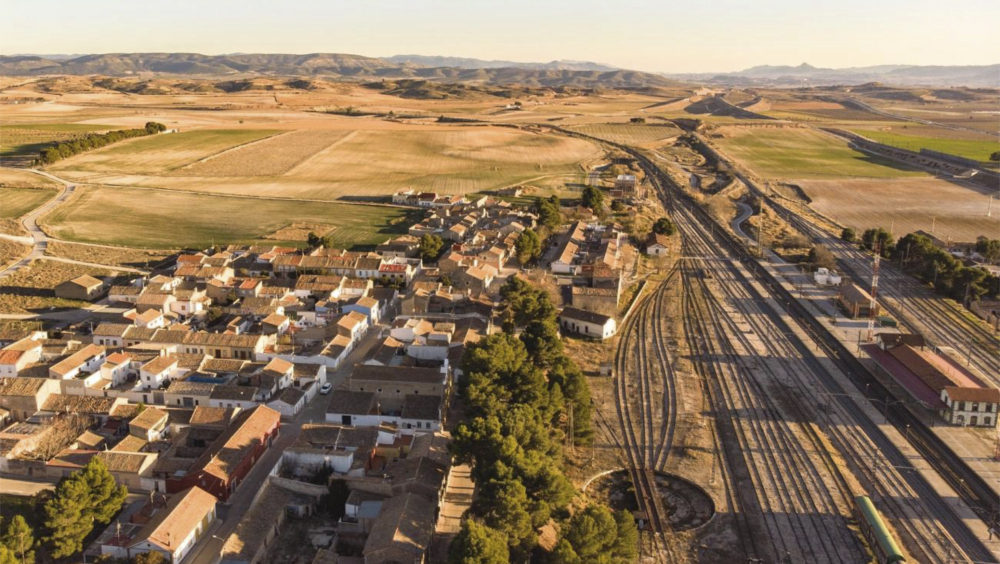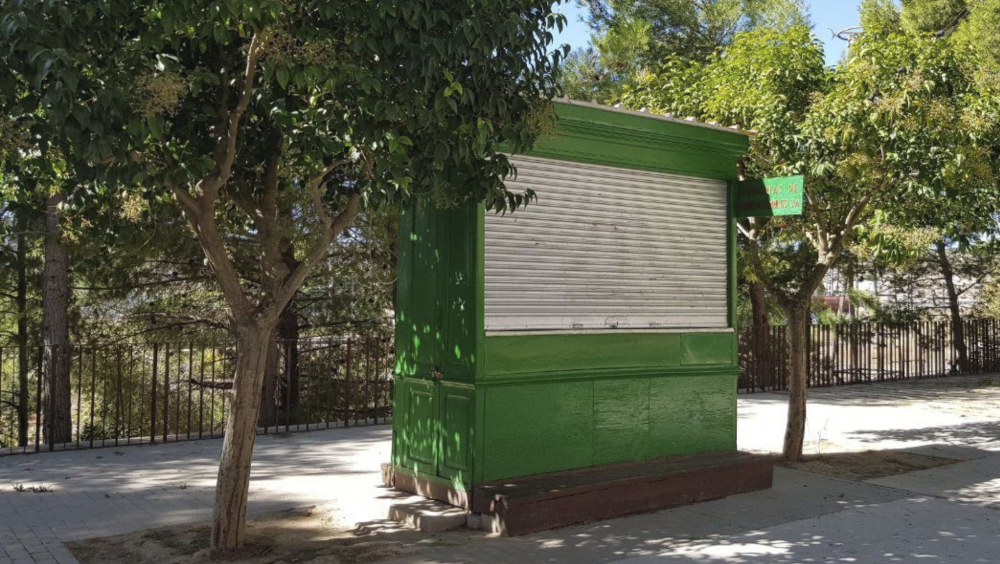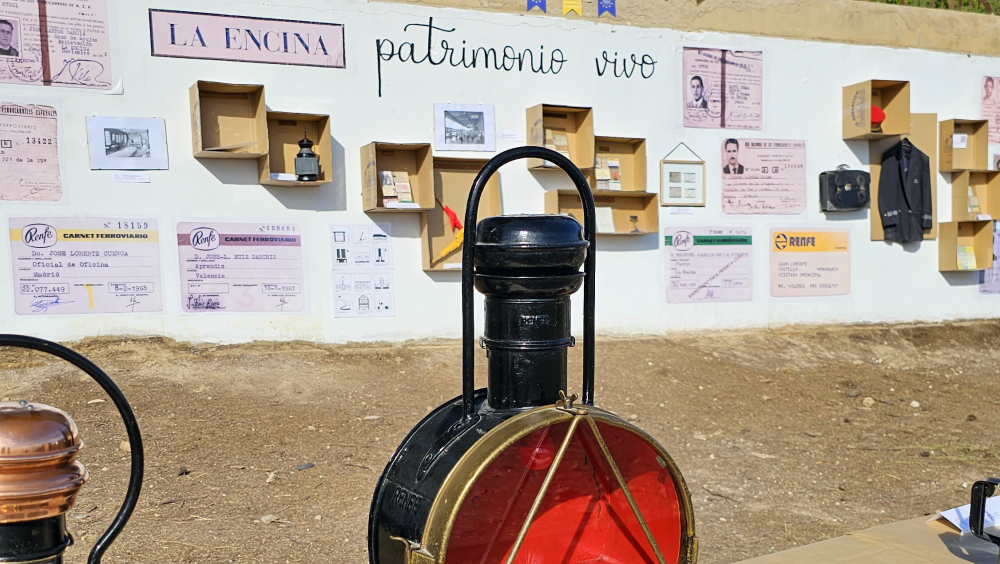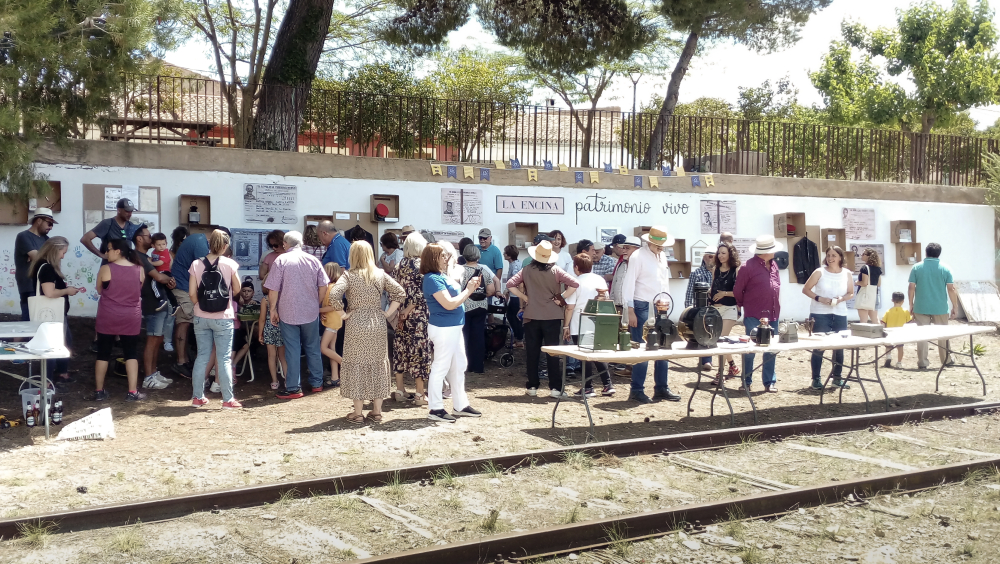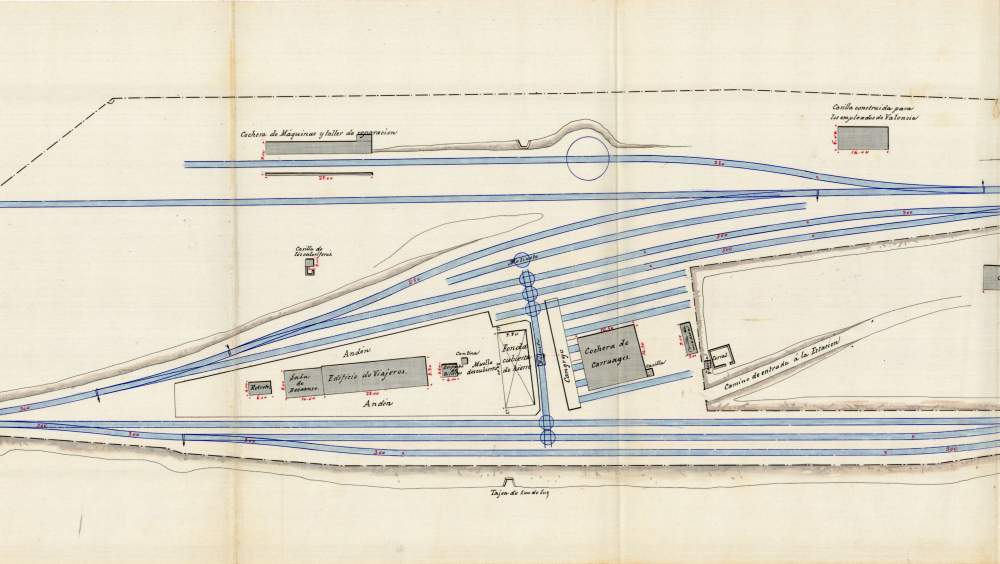La Encina
La Encina is a quaint village nestled in the northwest corner of Alicante province. Currently home to just a hundred residents, but there was a time when its population, revolving around the bustling activity of its railway station, numbered in the thousands. Its rich history dates back to 1863 when its station was established as a crucial junction and transfer point between the Madrid-Alicante and Madrid-Valencia railway lines. This marked the onset of significant growth and development for the town, closely intertwined with the expansion of the railway network.
For years, La Encina was a bustling hub where travelers would disembark daily to shop, dine, or simply enjoy a drink at its famed inn. As the town flourished, so did its railway infrastructure, propelling La Encina into prominence.
However, as time marched on and technology evolved, coupled with the emergence of new railway routes, La Encina's once-thriving railway facilities gradually waned in significance. Consequently, the town experienced a marked population decline.
Today, only two trains make scheduled stops at La Encina, a far cry from its heyday. Yet, despite the dwindling train traffic, much of its rich heritage has been painstakingly preserved. Notably, La Encina stands as the sole remaining pure railway settlement in the Valencian Community, boasting a heritage deeply ingrained in the town's identity.
Sadly, this heritage now stands at risk. Yet, the residents, bearing witness to the town's gradual decline, are resolute in their efforts to safeguard, conserve, and celebrate this invaluable legacy. Beyond its intrinsic heritage value, the railway holds profound sentimental significance for the community, spurring them to action in its preservation.
In a narrow depression that divides the mountainous areas of northeastern Albacete and southwestern Valencia, in the easternmost foothills of the Betic system, lies the town of La Encina. This enclave is situated at a geographical crossroads that facilitates communication between some of the most densely populated regions of the country. In this setting, amidst fields and mountains, emerges a small town that once vibrated with the activity and bustle of trains. Known simply as La Encina, this place has a history deeply intertwined with the railroad, as if it had emerged directly from the steel tracks that run through it.
In its heyday, La Encina was much more than just a stopover point on the railway line. It was a vital hub in the country's complex railway transport system. Its history dates back to 1863, with the construction of its station, which served as a junction and transfer point between the Madrid-Alicante and Madrid-Valencia railway lines. Here, locomotives would turn on a turntable while travelers took the opportunity to shop or dine at the well-known local inn. The constant roar and whistle of trains arriving and departing filled the air, bringing with them not only passengers and goods but also a sense of vitality and promise for the population. The train station stood as the pulsating heart of La Encina, around which the community settled, building homes, businesses, and infrastructure. The repetitive sound of wagon wheels on rails became the constant soundtrack of the daily lives of its inhabitants.
It was a time of flourishing during which people from various regions of the country settled in La Encina, forming families that grew around the iron roads that crossed the town.
Over time, La Encina's fortunes began to change. Modernization and the evolution of the railway industry brought inevitable changes. Steam locomotives, once symbols of progress and power, were replaced by faster and more efficient electric trains. New routes were opened, and companies merged, rendering some railway facilities obsolete and extinguishing the bustle and activity that once characterized the population. Slowly, the importance of La Encina began to fade, and with it, its vitality.
As years passed and opportunities dwindled, many young people left La Encina, searching for employment in other towns or cities, leaving behind an aging population and a sense of desolation. Nevertheless, as the world moved forward, the hearts of La Encina's inhabitants and natives remained tied to the rails and the legacy of their ancestors. Among them were former railroad workers and relatives of rail workers, whose stories were intertwined with the tracks and trains that once brought life to the town.
Determined to keep the memory of La Encina alive and the spirit of the life that once revolved around the railroad and willing to preserve its valuable heritage, the population continued to work together to ensure that their history would not be forgotten, carrying out dissemination, conservation, and even musealization tasks, and, of course, sharing the stories of those golden days with future generations.
Today, more than 160 years after the first rails and sleepers were laid in La Encina, the town still stands as a living witness to what it once was. Although trains no longer stop with the same frequency and modern life has transformed the population's appearance, the railroad's spirit still beats in every corner of La Encina. It is felt within homes, along the sculptural promenade that runs through it, or in the summer conversations held on the doorsteps of houses, reminding everyone that, although time moves forward, the past should never be forgotten. In La Encina, the history of the railroad remains the backbone of the community, and efforts continue to keep alive the memory of the ties that unite its inhabitants and the importance of preserving its material and immaterial heritage, constituting the essence of that town.
The construction and expansion of railroads and their impact on communities like La Encina were not isolated events but rather part of a broader pan-European phenomenon. Railways were integral to the industrialization and modernization of Europe in the 19th and early 20th centuries, which has left several examples of industrial and living heritage across Europe.
The story of La Encina's railway heritage resonates with similar narratives across Europe, highlighting European societies' interconnectedness and shared experiences in adapting to technological advancements. It also reflects the history of railway development in the rest of Europe, linked with European movements such as industrialization, urbanization, and economic integration. Railways facilitated the movement of goods, people, and ideas across borders, contributing to economic growth and cultural exchange in Europe, and La Encina is a part of it.
The preservation and promotion of heritage originated from community initiatives, as happened in La Encina, contributes to fostering a sense of shared identity and common values among European nations. As the Faro Convention promotes, La Encina is an example of the active participation of local communities in decision-making related to cultural heritage that affects their lives and environments.
By recognizing and commemorating the significance of railways in European history, countries can celebrate their shared heritage and promote cross-cultural understanding. Moreover, initiatives to conserve and interpret railway heritage can serve as platforms for promoting values such as connectivity, mobility, and collaboration, as happened in 2021 (the European Year of Railway), which are fundamental to European integration efforts.
By highlighting the role of railways in shaping European societies and fostering connections between communities, heritage preservation projects like La Encina's contribute to the promotion of European unity and solidarity.
